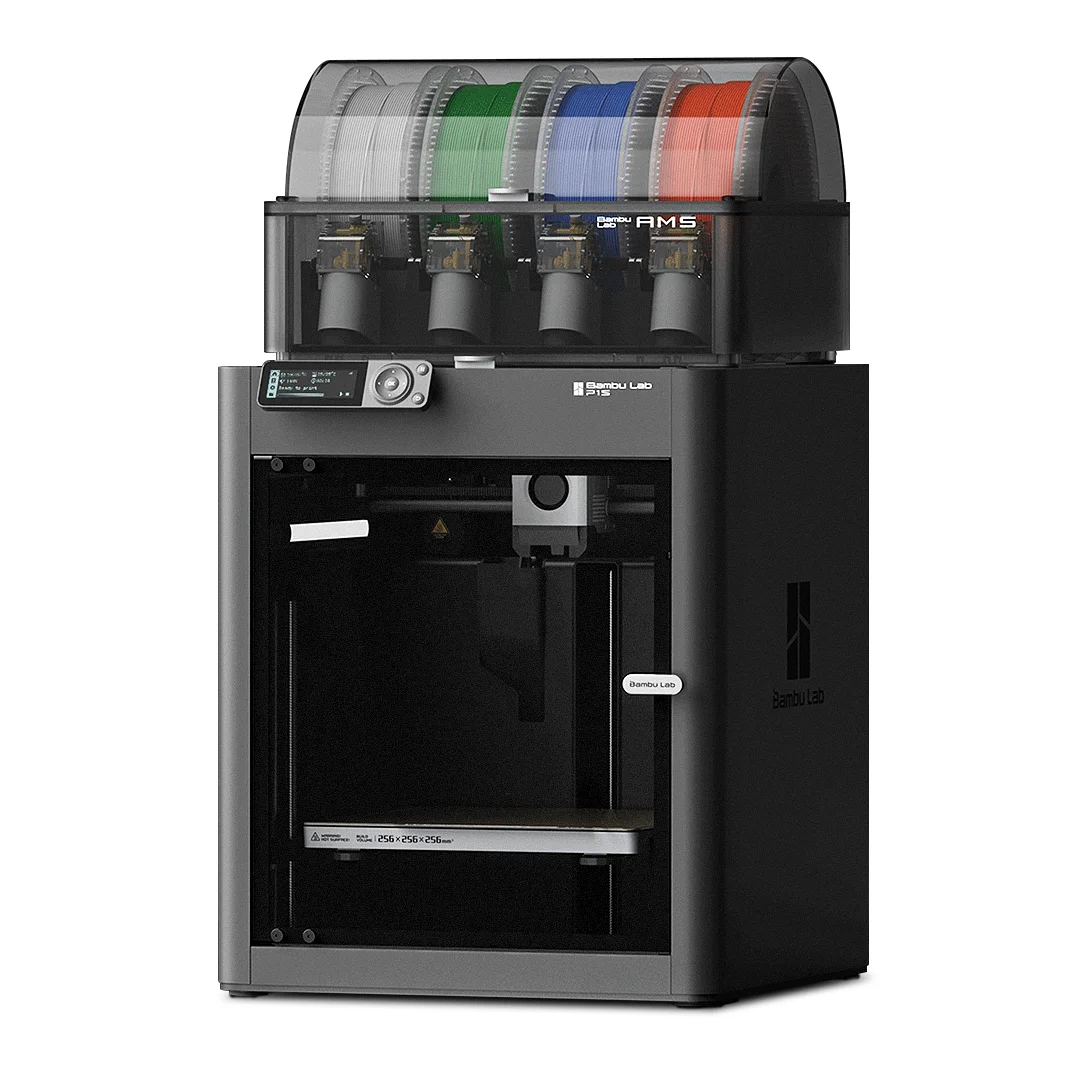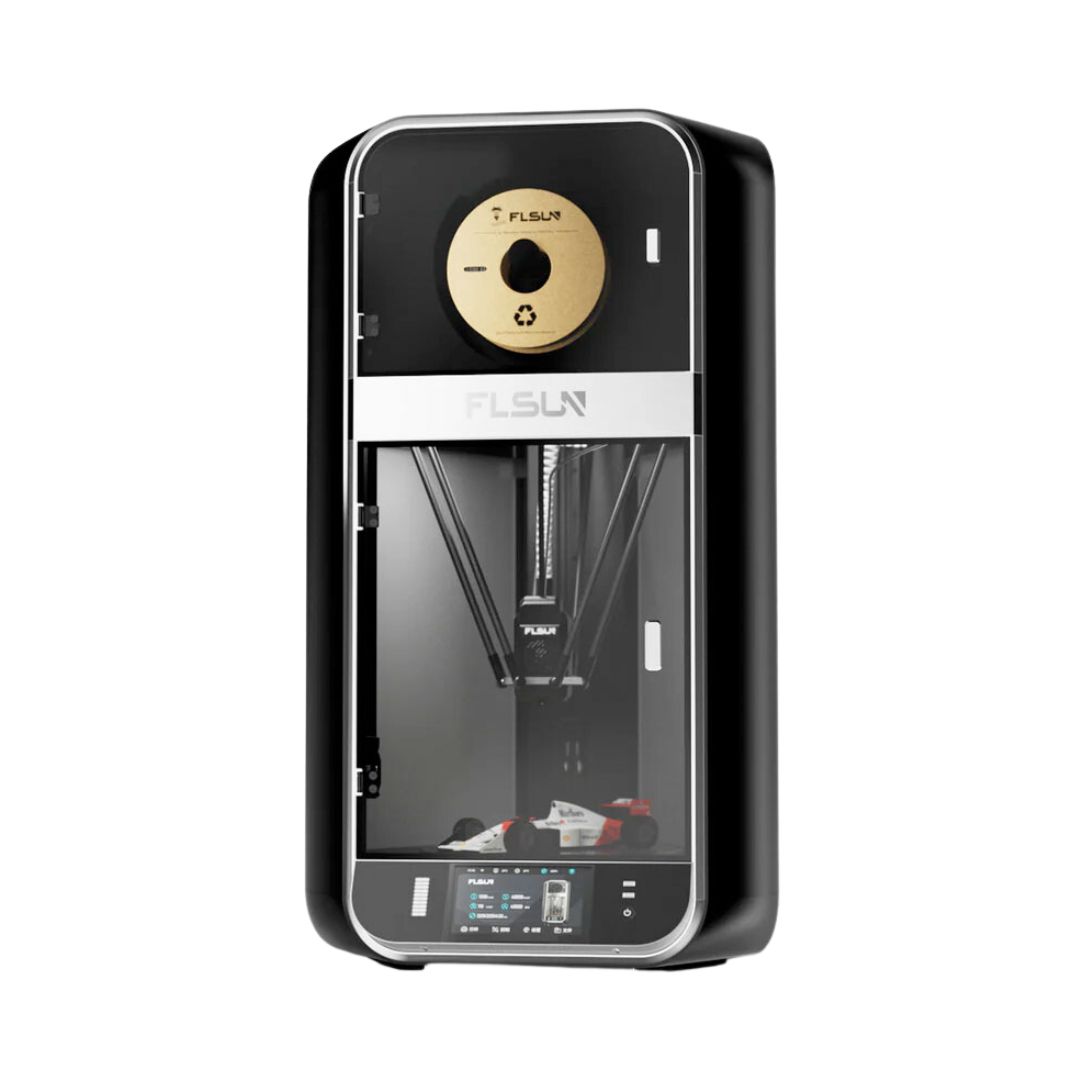Compare P1S vs S1 PRO
Comparison between the best 3D printers
Choose the best 3D printer at the best price. The cheapest 3D printers are here.
Buy a 3D printer here with 3D Fila.
 |
 |
|
| Model | P1S[BUY P1S] |
S1 PRO |
| Printing Material | Filament | Filament |
| Buy Filament for Bambu Lab P1S | Buy Filament forFLSUN S1 PRO | |
| Estimated price | $949,00 | $1500,00 |
| Manufacturer | Bambu Lab | FLSUN |
| Release Year | 2023 | 2024 |
| Print Volume [mm] | 256x256x256 | 320x320x430 |
| Printer Size [mm] | 389x389x458 | 450x450x1200 |
| Weight [kg] | 12,95 | 41 |
| Power Loss Recovery | YES | YES |
| Enclosed printer | YES | YES |
| Bed Leveling | Automatic | Automatic |
| Filament End Sensor | YES | YES |
| Bed type | Heated | Heated |
| Power supply system | Direct Drive | Direct Drive |
| Standard nozzle | 0,4 | 0,4 |
| Maximum Nozzle Temperature [°C] | 300 | 350 |
| Maximum Bed Temperature [°C] | 100 | 120 |
| Maximum printing speed [mm/s] | 500 | 1200 |
| Filament holder | YES | YES |
| Camera for supervision | YES | YES |
| Recommended filaments | PLA, PETG, TPU, PVA, PA, PA-CF, Nylon, PC | PLA, PETG, TPU, ABS, ASA, Nylon, PC, PP, HIPS |
| Recommended slicers | Bambu Studio, Super Slicer, Cura, Prusa Slicer, Orca | FLSun Slicer 2.0, Orca Slicer |
| Maximum Resolution [mm] | 0,1 | 0,01 |
| Processor | Quad ARM A7 1.2 GHz | |
| Display | Touchscreen 5'' | Touchscreen 7'' |
| Power Supply | 350 W | 500W 110-240V, 50/60HZ |
| Connectivity | Wifi, Bambu bus, Cartão SD | Wi-Fi, USB, app FL Sun World |
| Operating systems | Windows, Linux, Macbook | Windows, Mac |
| Date of registration in the system | 2024-04-11 | 2024-12-16 |
| Release date | 2023 | 2024 |
| Extra features | The Bambu Lab P1S stands out for its out-of-the-box practicality, eliminating the need for manual adjustments with automatic calibrations such as bed leveling and vibration compensation. It features multicolor printing capability through the AMS system, allowing up to 16 colors when connecting four AMS units. With an advanced control algorithm, the P1S offers fast printing speeds without sacrificing quality. Equipped with modern features such as filament end sensor, semi-automatic belt tension, direct extruder, welded frame and all-metal hotend, along with a fully enclosed chamber, the P1S promotes a superior printing experience, supporting a wide range of materials. | The FLSUN S1 Pro is a high-speed Delta 3D printer, reaching up to 1200 mm/s with 40,000 mm/s² acceleration. It features a build volume of 320 mm (diameter) x 430 mm (height), a 350°C hotend, dual-zone heated bed up to 120°C, a 50°C heated chamber, and an active filament drying holder. It includes a camera for remote monitoring, integrated UPS for power-loss safety, a HEPA filter, and a 7 touchscreen interface. Perfect for large and complex projects. |
| Support for multiple colors and materials (AMS and CFS) | YES | NO |
Notes * |
||
| Cost-benefit | 7 / 10 | 7 / 10 |
| Hardware | 6.4 / 10 | 5.4 / 10 |
| Tela | . | . |
| Print volume | 4 / 10 | 4 / 10 |
| Performance | 4 / 10 | 9 / 10 |
| [BUY P1S] |
Conclusion |
| In comparing the Bambu Lab P1S and the FLSUN S1 PRO, both printers offer impressive features that cater to different printing needs, but they target slightly different user groups due to their specifications and price points. The Bambu Lab P1S is more accessible in terms of price while still providing a robust set of features, including automatic bed leveling, a multi-color printing capability, a heated build chamber, and the flexibility to handle various filament types. Its compact size and weight make it a suitable choice for home users or small workshops where space is a consideration. The P1S shines in practicality with excellent speed performance and user-friendly interface features, making it ideal for individuals who require efficiency and ease of use without compromising on print quality. On the other hand, the FLSUN S1 PRO, although at a higher price point, offers a significantly larger print volume, higher maximum printing speed, and advanced features such as an active filament drying system and dual heating zones. This makes it particularly suitable for industrial applications or users who frequently tackle large or complex projects. It also provides a higher maximum nozzle temperature and the ability to handle a wider range of filament types, contributing to its versatility. In conclusion, if budget is a major concern and the intended usage aligns with the capabilities of the P1S, it represents a solid choice. However, for users who prioritize large-scale projects and advanced printing capabilities, the FLSUN S1 PRO justifies its higher cost with additional performance features. Ultimately, the choice between the two will depend on individual requirements, as both printers exhibit strong cost-benefit ratios within their respective target markets. |

